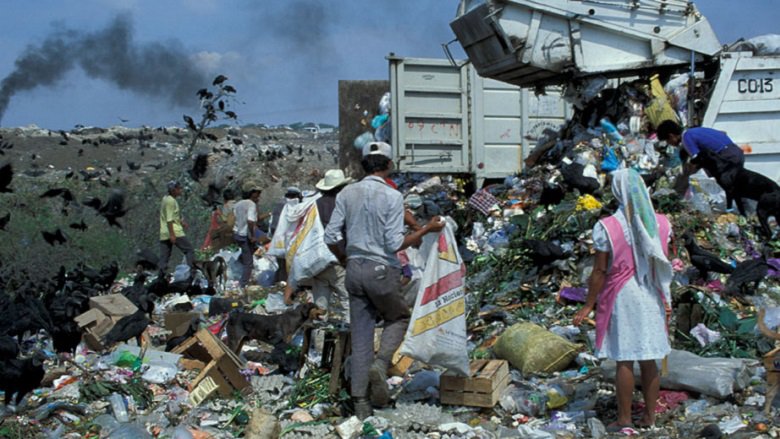The agriculture, energy, sanitation and waste sectors are collectively responsible for 90-95% of global anthropogenic sources of methane:
- Agriculture accounts for ~41% of methane emissions from human activity, including from rice cultivation and agriculture waste burning, manure management, and gas from cows and sheep;
- Energy accounts for ~35%, including from oil and gas extraction, pumping, transport and coal mining;
- Sanitation and waste account for ~20%, including from landfills and wastewater treatment.
The World Bank Group (WBG) has a long record of engagement on methane reduction across the key areas of agriculture, energy, and sanitation and waste. The table below provides examples of extensive WBG work in this area, including various types of project activities that will reduce methane emissions.
Agriculture | - IDA provided $200 million for a project in Logone Valley in Cameroon to improve irrigation and drainage services and agricultural production, limit methane emissions from rice fields and train farmers on climate-smart agriculture approaches.
- IDA provided $387 million for a project in the Mekong Delta in Vietnam to support the transition away from multiple-crop farming systems which depleted soils and disrupted hydrological balances.
- IBRD provided $250 million for an irrigation project in Indonesia to modernize irrigation services and improve efficiency of water delivery to rice farms, aiming to reduce methane releases from rice growing.
- The Water-in-Agriculture Global Solutions Group of the Bank provides technical advice to its members and other stakeholders on how to enhance water use in agriculture in terms of sustainability, productivity, and equity.
|
Energy | - Through the Global Gas Flaring Reduction Partnership, the Bank works with governments and companies to end routine gas flaring and venting, which releases methane at oil production sites. The Bank focuses on addressing technical, regulatory, and financial barriers to flaring and venting reduction, develops country-specific flaring/venting reduction programs, and produces a variety of reports and research to support governments. Since 2003, the Partnership has worked to support methane emissions reduction around the world.
- IFC, the Bank Group’s private sector arm, supported one of the largest gas flaring reduction projects in the world in Iraq by arranging a $360 million loan, helping avoid unnecessary flaring while supporting Iraq’s energy transition and expanding energy access for the poor.
- Reduction of gas flaring and venting is also included as part of policy reforms accompanying the Bank’s budget support operations in several countries.
- MIGA, which provides political risk insurance and credit enhancement for cross-border private investors and lenders, provided a $67 million guarantee for a power generation facility using methane gas extracted from Lake Kivu in Rwanda.
|
Sanitation and Waste | - IDA provided $170 million to improve livability with safely managed sanitation services and reduce methane emissions in Dhaka, Bangladesh by treating sewage and septage, also reducing inland flooding and water pollution.
- IDA provided $700 million for a project in Nigeria to rehabilitate water supply infrastructure and reduce emissions through septage treatment, upgrading latrines, and using treated sludge as fertilizer replacement.
- The Bank published the Financing Landfill Gas Projects in Developing Countries report, outlining ways that city governments, private landfill owners, or other project developers can finance landfill gas management to reduce emissions.
- IBRD provided $200 million for a project in Cairo, Egypt addressing air pollution, including upgrading integrated waste management infrastructure to minimize methane emissions.
- IDA provided $115 million for an urban sanitation project in Mozambique to improve access to safely managed sanitation and reduce methane emissions with improved wastewater collection and treatment.
- IBRD provided $250 million for a project in São Paulo, Brazil to improve water access for the vulnerable and reduce emissions from wastewater.
|
The WBG is ramping up support to clients to reduce methane emissions. WBG support can include a wide range of interventions including analytical work, capacity building, support on regulatory reforms, leak detection/monitoring, investment prefeasibility studies, and direct lending or investment. Methane reduction is also a key focus of a number of upcoming Country Climate and Development Reports, or CCDRs, which are new WBG core diagnostic reports that integrate climate change and development considerations and help countries prioritize the most impactful actions that can reduce greenhouse gas (GHG) emissions and boost adaptation. For example, the Vietnam CCDR notes that the agriculture sector is the second largest contributor to GHG emissions in Vietnam, with mostly methane and nitrous oxide, and identifies cost effective measures such as investing in low-carbon technologies in rice production (e.g., alternate wetting and drying), which can reduce emissions, decrease production costs and provide higher income for farmers. WBG will continue its leadership in methane action and engage with other development institutions and actors to deepen collaboration and deliver the greatest impact.
